Long time no see, dear photography, last time I posted pics in my blogs was during my 2024 Recap. I've been taking photos since the beginning of the year, it's just that I've been thinking about other things, between university, different types of blogs here on NG, collabs, etc.
Today I would like to share some photos I took while spending a bit of time with my mom to let her mind rest a bit since she always work a lot at home, and deserves a bit of relax after all. Let's begin:
Common Wood Pigeon (Columba palumbus)
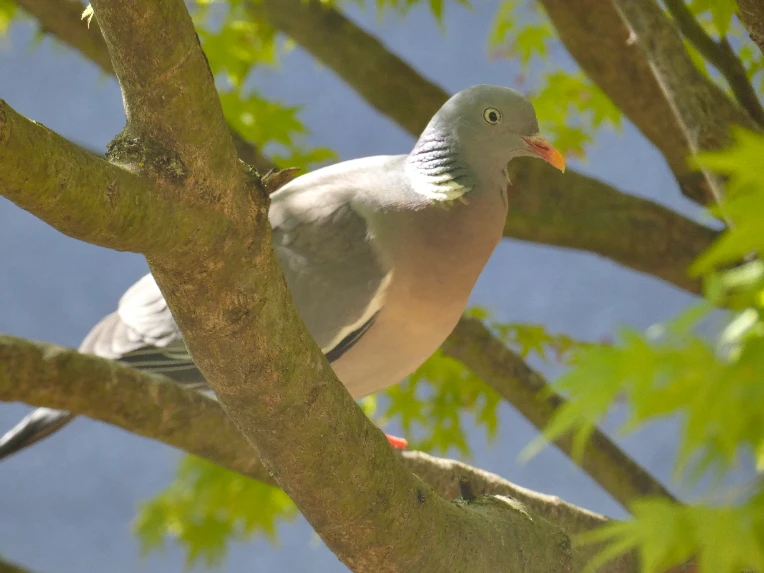
This fella perched on one of the Japanese maples of my garden. It is a native of the western Palearctic and belongs to the genus Columba. Because of its versatile diet makes, the bird is regarded as an agricultural pest, and due to this it is extensively hunted over much of their range. I am very glad that this does not appear to have a major impact on their population numbers though^^
There are 5 subspecies, but sadly one is extinct the Madeiran wood pigeon (Columba palumbus maderensis). Fossil records of the species are known from the early Middle Pleistocene of Sicily. Despite similar to the stock dove (Columba oenas) and the rock dove (Columba livia), the species has some key features that distinguish from other columbid species, such as:
- large size, 38–44.5 cm
- weight, 300–615 g
- white neck and wings
- wingspan from 68 to 80 cm
- tail from 13.8 to 15 cm
- a series of green and white patches on their necks is another feature of this species
- the eye is pale yellow
- overall grey plumage with pinkish breast (like you can notice here)
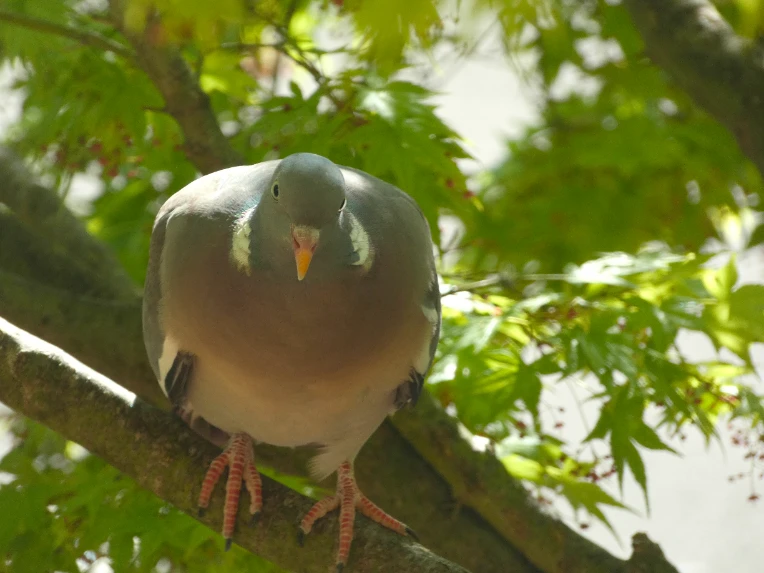
The species breeds in trees in woods, parks and gardens, laying two white eggs in a simple stick nest which hatch after 17 to 19 days. Wood pigeons seem to have a preference for trees near roads and rivers. Breeding can occur throughout the year if there is food is plentiful; however, the breeding season is usually between April and October. The survival rate for juveniles in their first year was 52%, and the annual survival rate for adults was 61% (1). Young common wood pigeons quickly become fat, as a result of the crop milk fed to them by their parents. This is an extremely rich fluid that is produced in the adult birds' crops during the breeding season (2).
The call is a very characteristic coo, made up of 5 syllables, the last 2 of which are slightly separated from the first three, and with the accent on the second; it is reminiscent of a low-pitched "oooh, oooh, ooh, ooooh, ooh".
Easily mistaken with the call of the collared dove (Streptopelia decaocto) due to the intonation and the accent on the second syllable, it is however distinguished by having five syllables instead of three and by the more "vibrant" timbre. The tone increases in intensity from the first to the second syllable, the highest, to progressively descend to the last, which is the lowest (in the collared dove the highest syllable is instead the first). This stanza is repeated continuously from three to five times. I swear that the first I heard the call, I thought a collared dove was a little hoarse XD
Common Blackbird (Turdus merula)
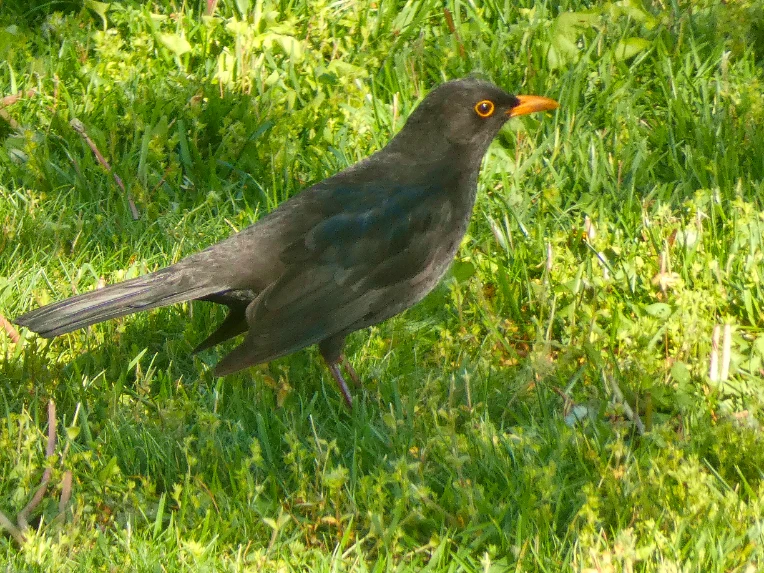
This is a lovely friend I adore to see hopping in my garden and flying across trees. I always make sure not to disturb him when I see one, even if they are not bothered by my presence because they know I am no threat. Sometimes I even feed them with some worms I find in my vegetable garden, and they gladly grab them. This is a male, they are the ones I photograph the most because they are less fearful than females and more easily approachable. The male is all black except for a yellow eye-ring and bill and has a rich, melodious song (I love listening to them when they claim their nocturnal perches for night sleep); the adult female and juvenile have mainly dark brown plumage. I have other photos of these fellas such this old photo I took last year featuring a father with his fledgling (you can notice the dark, brownish plumage):
Father
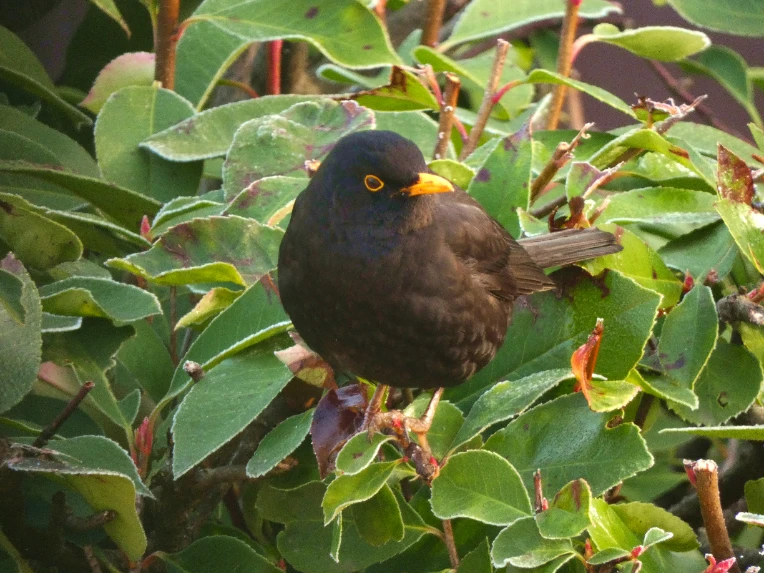
Son/Daughter
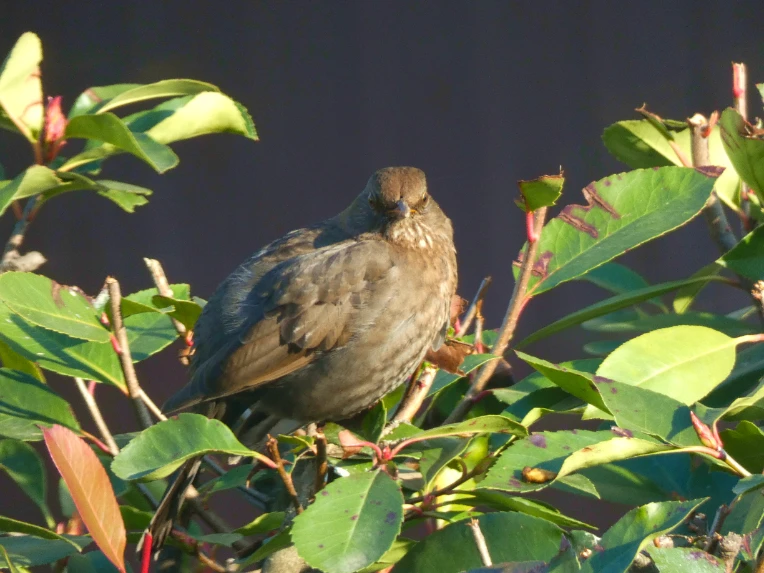
Great Tit (Parus major)
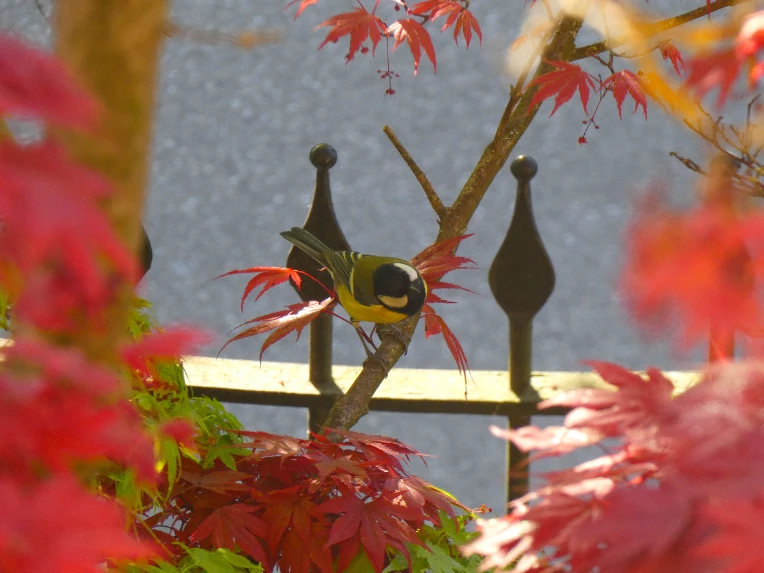
One of my favourite bird to photograph yet one of the most difficult after the European robin. I can distinguish his call but it's very difficult to photograph because he's fast, agile and doesn't remain still for too long so following him with both my eyes, ears and the camera requires a lot of skills while trying not to be noticed by the bird at the same time. 15 subspecies are recognised for this bird. The nominate subspecies (P. m. major) is the most widespread species, which can be found throughout much of Europe, Asia Minor, northern and eastern Kazakhstan, southern Siberia and northern Mongolia, as far as the mid-Amur Valley. This is a male specimen as I could notice the broad black mid-line stripe running from the bib to vent. There is a dull white spot on the neck turning to greenish yellow on the upper nape. You can see the white spot on the neck of this female great tit I photographed two years ago:
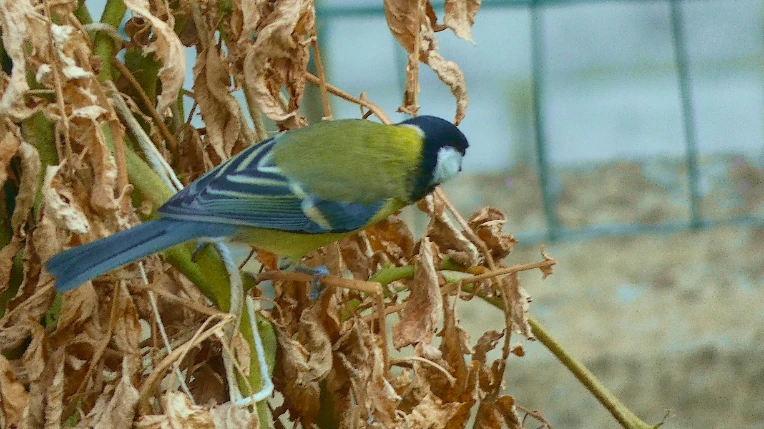
Another photo of her (I have others but this one is particularly nice due to a feature I never realized until a user I met on FA made me notice):

Notice how big metatarsus are compared to the rest of the body, this is a feature I always try to keep in mind when drawing these birds because I tend to make them smaller like in other bird species.
Fun fact: higher levels of carotenoid increase the intensity of the yellow of the breast its colour, and also enable the sperm to better withstand the onslaught of free radicals. Carotenoids cannot be synthesized by the bird and have to be obtained from food, so a bright colour in a male demonstrates his ability to obtain good nutrition. However, the saturation of the yellow colour is also influenced by environmental factors, such as weather conditions. The width of the male's ventral stripe, which varies with individual, is selected for by females, with higher quality females apparently selecting males with wider stripes (3).
The length can range from 12.5 cm to 15 cm, wingspan is about 24 cm. The black head, the prominent white cheek patch and the black stripe going down towards the legs are the most distinctive traits of this little yet brave fella. The dark vertical stripe is narrower on females and often does not extend as far down toward the legs, and this is why I can safely say that this bird I photographed two years ago is a female even if from the angle of this photo cannot be seen clearly. The species prefers insects and other small invertebrates in the summer but will eat seeds, berries and fruit in the colder months when live prey is scarce. I often see them eating in my vegetable garden. During winter they can even enter pipistrelle bat dens and eat their brain by repeatedly pecking at the head because the brain is rich in fat. This predatory behavior was recorded in 2009. They have also been recorded using tools, using a conifer needle in the bill to extract larvae from a hole in a tree.
Begging for food
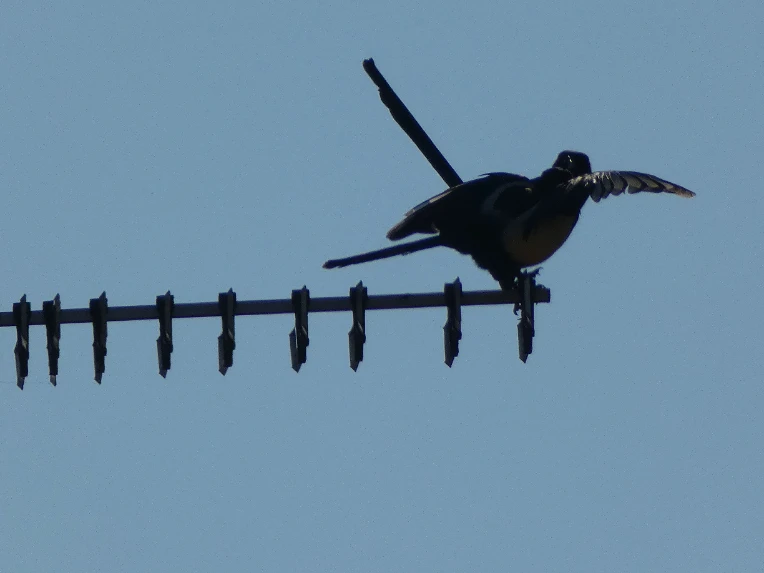
A young magpie begging for food, I could take the pic when the mother was feeding him/her. The breeding season begins with the first warm days, generally in spring (with a peak in nesting in April), although in mild winters, egg-laying can take place as early as December. Here, in Europe, clutches are typically laid in April and usually contain five or six eggs, but clutches with as few as three and as many as ten have been recorded. On average, the eggs of the nominate species (P. p. pica) measure 32.9 mm × 23 mm and weigh 9.9 g. On average, only 3 or 4 chicks survive to fledge successfully. Some nests are lost to predators, but an important factor causing nestling mortality is starvation. Magpie eggs hatch asynchronously, and if the parents have difficulty finding sufficient food, the last chicks to hatch are unlikely to survive (4).
A study conducted near Sheffield in Britain, using birds with coloured rings on their legs, found that only 22% of fledglings survived their first year. For subsequent years, the survival rate for the adult birds was 69%, implying that for those birds that survive the first year, the average total lifespan was 3.7 years.
Eurasian Jay (Garrulus glandarius)
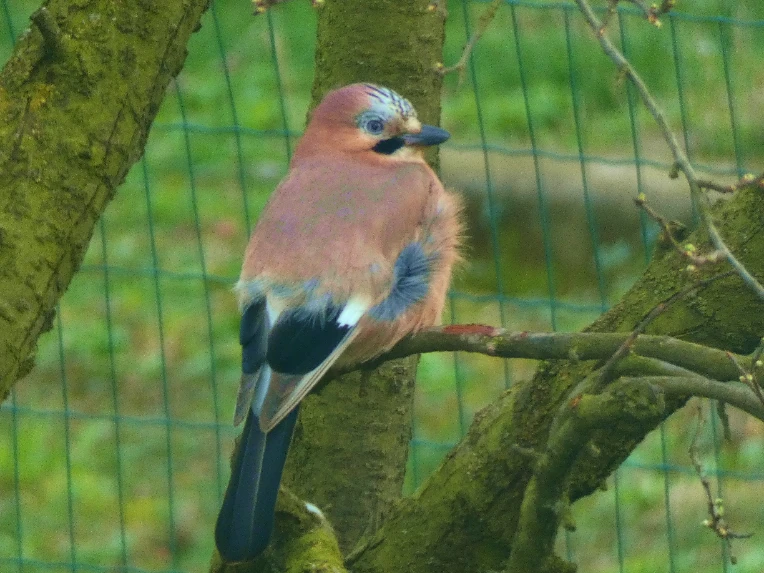
As last photo a pic of an Eurasian jay perching on a tree during a windy day (you can notice the ruffled feather) I took last month. I liked how relaxed he/she was considering it's not an easy corvid to photograph if he/she notices you. It is a relatively small corvid, with a length of 34–35 cm (13–14 in) and a wingspan of 52–58 cm. The nominate species has light rufous brown to a pinkish brown body plumage. The whitish throat is bordered on each side by a prominent black moustache stripe. The forehead and crown are whitish with black stripes. The rump is white. The complex colouring on the upper surface of the wing includes black and white bars and a prominent bright blue patch with fine black bars. The tail is mainly black. I love listening to their harsh, rasping screech and sometimes I have fun at mimic it just to troll them a bit XD
Oh well, that's all for now because I reached the maximum number of photos I can post (10 photos per blog), others will be posted in future Shutter-bug chronicles blogs. Stay tuned and have a nice day!
References and footnotes
(1) Saether, B.-E. (1989). "Survival rates in relation to body weight in European birds". Ornis Scandinavica. 20 (1): 13–21. doi:10.2307/3676702. JSTOR 3676702
(2) Gillespie, M. J.; Haring, V. R.; McColl, K. A.; Monaghan, P.; Donald, J. A.; Nicholas, K. R.; Moore, R. J.; Crowley, T. M. (2011). "Histological and global gene expression analysis of the 'lactating' pigeon crop". BMC Genomics. 12: 452. doi:10.1186/1471-2164-12-452. PMC 3191541. PMID 21929790
(3) Norris, K. J. (1990). "Female choice and the evolution of the conspicuous plumage coloration of monogamous male great tits". Behavioral Ecology and Sociobiology. 26 (2): 129–138. doi:10.1007/bf00171582. S2CID 36757531
(4) Birkhead, T. R. (1991). The Magpies: The Ecology and Behaviour of Black-Billed and Yellow-Billed Magpies. T. & A.D. Poyser. ISBN 978-085661067-7.
SouSTAR
Your photos are so beautiful!
ShangXian
Thank you! Keep in mind that I am not a professional, I am a casual photographer who still has a lot to learn and would like to experience new challenges such as astrophotography. Birds are definitely my favoruite subjects to photograph and paradoxically are the easiest since they can be found everywhere unlike mammals which can be more elusive.